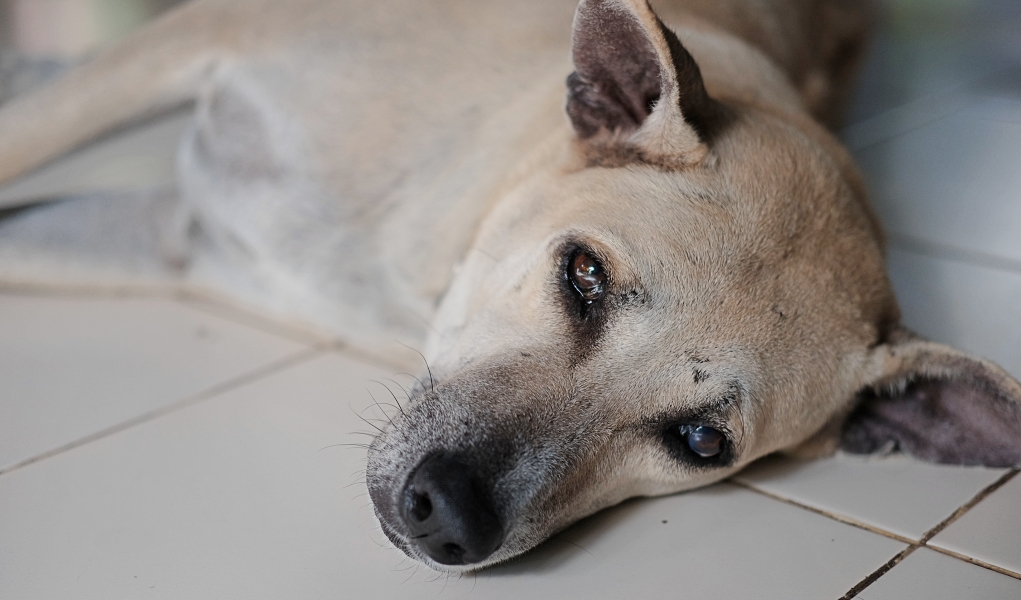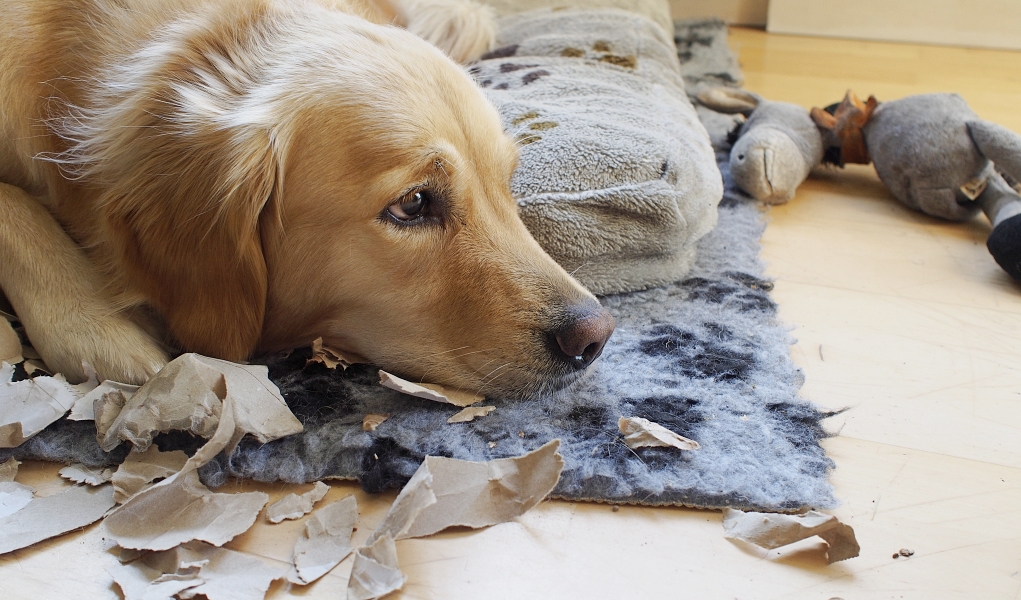Virtually every dog owner talks to their pet, but how much do we actually listen to what they have to tell us? Dogs can't speak our language, but they do have a way of communicating. There are a number of ways your dog asks for help – you just have to know what to look for.
Scientists have been trying to understand the intricacies of communication between humans and dogs for many years. We don't know how much of our language a dog understands. What we do know is that our pups react to our body language, and we need to learn to do the same for them.
A dog's natural instincts are to take care of himself. If he trusts you, he may ask for help, but the signs are very subtle. There are 6 common signs that your canine companion needs help. Every dog is different, but it's likely that your pet will request aid by exhibiting at least one of the behaviors below.
6 Ways Your Dog Asks For Help
 1. Excessive Grooming/Tongue Flicking/Panting
1. Excessive Grooming/Tongue Flicking/Panting
If your dog is injured, he's going to rely on his natural instincts to clean the wound. You may notice excessive licking, biting and/or grooming of the injured area. Check the area for any injuries. Just because you cannot see an injury, like a cut or open wound, doesn't mean your pup isn't in pain.
If you can't see a problem, keep an eye on the area. If the persistent grooming continues or you notice any signs of concern (swelling, redness, etc…), seek veterinary treatment immediately.
Tongue flicking and excessive panting can also be signs of an issue. Typically these are signs of anxiety or stress, but they can also mean there is an underlying health problem that you cannot see.
Again, keep a close eye on your dog. Look for any other odd behaviors or signs of distress. If the behavior does not subside after 12-24 hours, you should check in with your veterinarian.
2. Pacing
Pacing is typically a sign of anxiety or stress. It may occur for a brief period of time, like while Fido is waiting for a family member to return from an outing. If your dog starts pacing out of the blue or if the pacing lasts for an extended period of time, it may be a sign of a serious problem.
Brief pacing periods are considered relatively normal. You can work with a professional dog trainer or canine behavior specialist to help curb this problem. For more serious pacing issues, you'll need to consult your vet.
The veterinarian will help you figure out the reason why your pet is pacing. If it's due to stress or anxiety, they will discuss treatment options with you. There are commercial products that may help with mild anxiety, but for serious cases your vet may recommend medication.
3. Whining
Some dogs whine more than others. If your dog is usually vocal, his whining may not be any cause for concern. If he starts whining for no apparent reason, it may be a sign that he is in physical pain, in need of food or water, bored or needs help in some other way.
Look for other signs that could help you determine the cause of the whining. You won't be able to help your pooch until you understand what's causing the whining. Watch his movements, try to read his body language and do your best to figure out what is bothering your pet.
RELATED: 5 Dog Pain Relief Home Remedies
4. Destructive Behavior
Most dog owners see destructive behaviors as a sign of a poorly trained dog. While this may be true with young puppies, adult dogs are often destructive to show their unhappiness. They are simply asking for help in the only way that they know how.
Destructive behavior could be a sign of an unhappy dog. Is he being left home alone a lot? Are you spending enough time with him when you are at home? Does he have enough toys and chews to entertain him and provide adequate mental stimulation?
Bored dogs, dogs that are stressed and dogs that are lonely/depressed may show their feelings through destructive behavior. The worst thing you can do for these dogs is to punish them. Address the reason for the destructive behavior and be patient with your pet.
5. Excessive Clinginess/Shyness
If your dog is normally clingy or shy, you may not notice this sign. However, if your dog is normally affectionate and suddenly begins to shy away from petting and attention, he may be asking you for help. This could be his way of telling you that petting hurts or he's nervous that you're going to touch a sensitive area on his body.
Likewise, if your dog becomes excessively clingy for no apparent reason, it could be a sign that he needs your help. He could be scared, anxious or stressed. There could also be an underlying health condition that is causing problems that your dog doesn't understand.
6. Abnormal Agression
Pain is a common reason for dogs to be abnormally aggressive. If your dog begins growling, snapping or biting for no apparent reason, you should seek veterinary consult immediately. In this situation, it's safer to consult an expert rather than wait and try to figure out the underlying problem on your own.
READ NEXT: 10 Ways Dogs Communicate Their Sense of Humor According to Science













